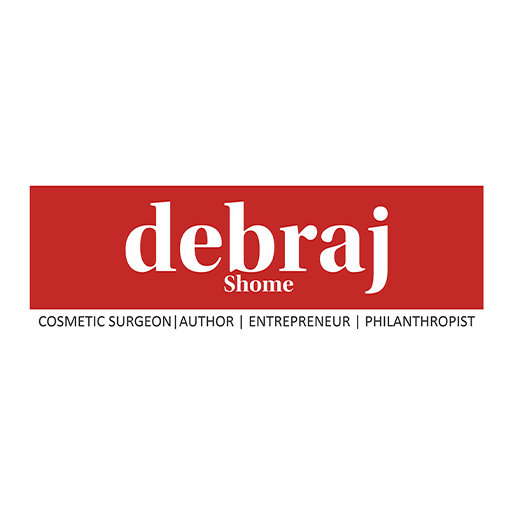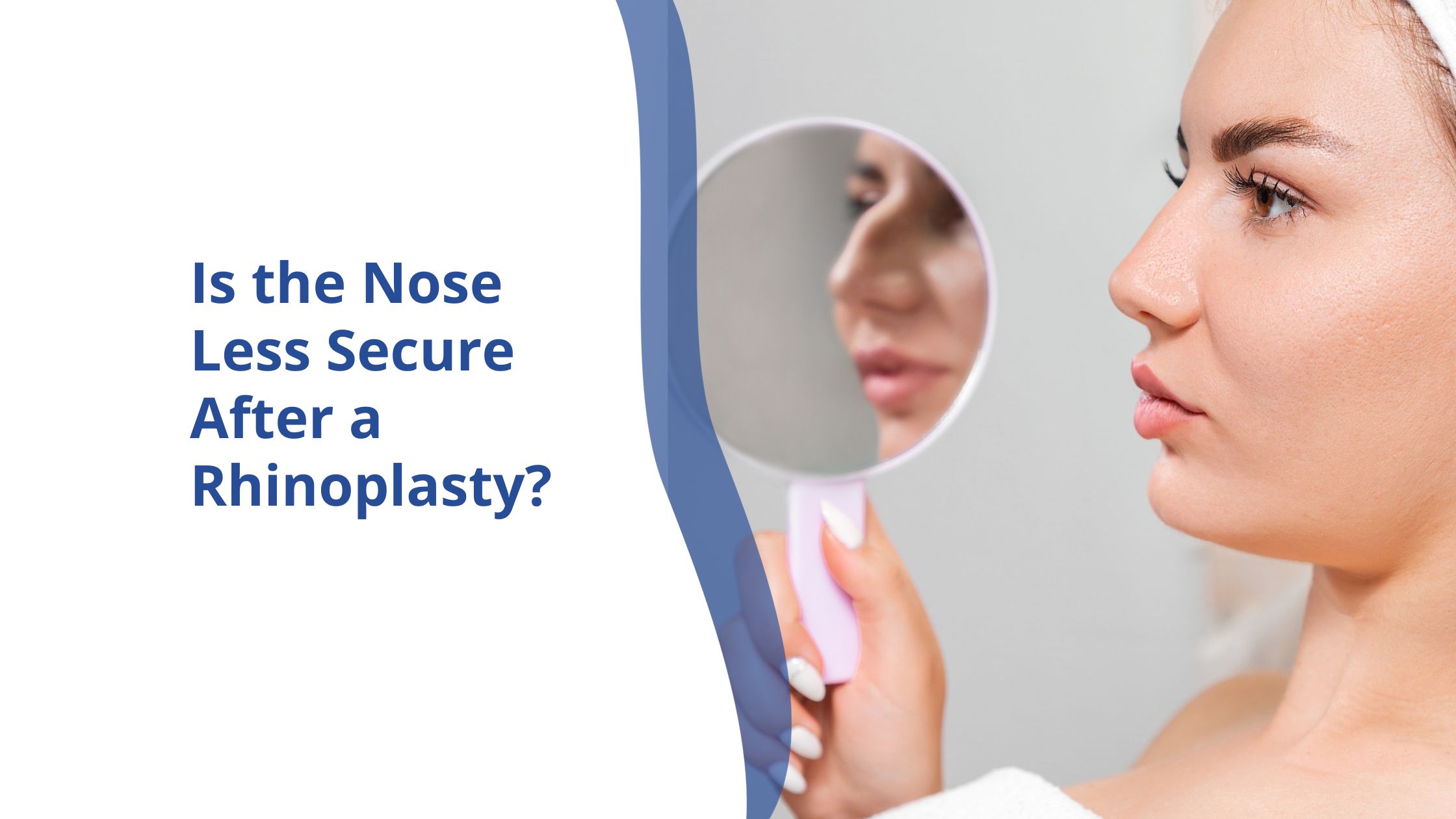Concern about the strength of the nose post-rhinoplasty is one of the top questions that most patients ask the best rhinoplasty surgeon in India. Also known as the nose job, this surgery aims to alter the shape, size, and structure of the nose for functional or cosmetic purposes.
Rhinoplasty surgery is a safe and effective procedure, and the risk is minimal. The misconception that it weakens or makes the nose less secure is a misleading one.
Rhinoplasty is an intricate procedure, and its impact on the nasal structure needs to be properly understood as it dictates the factors affecting the strength of the nose. It is crucial to address this concern.
The Nose’s Anatomy and Strength: The nose is a complex structure composed of bone, cartilage, skin, and soft tissue. The underlying framework of bones and cartilage influences its strength and integrity.
The upper portion of the nose consists of bone, while the lower part is primarily cartilage. The nasal bones and cartilage provide structural support and maintain the nose’s shape and function. The strength and stability of the nose depend on the quality and quantity of these tissues.
Purpose of Rhinoplasty: Rhinoplasty can be performed for various reasons, including correcting breathing difficulties, repairing nasal injuries, improving nasal symmetry, or having a beautiful nose shape. Depending on the individual’s goals, rhinoplasty may involve reshaping the bone, cartilage, or both to achieve the desired outcome.
Types of rhinoplasty procedures:
-
Closed Rhinoplasty:
Incisions are made inside the nostrils, making them invisible after surgery. This technique is suitable for minor adjustments and typically results in less visible scarring.
-
Open rhinoplasty:
It involves an additional incision across the columella (the strip of tissue between the nostrils) to provide better access and visibility to the nasal structure. It allows for more extensive modifications and is preferred for complex surgeries.
Effects of Rhinoplasty on Nasal Strength:
Rhinoplasty involves the careful manipulation and restructuring of nasal tissues to achieve the desired aesthetic or functional goals. While the surgery alters the nasal framework, it doesn’t necessarily weaken the nose significantly if performed by a skilled and experienced surgeon.
Healing post-rhinoplasty
But yes, for up to six weeks after modern rhinoplasty (the recovery period), you need to be careful about your nose. Recovery time depends on the extent of the procedure.
The noses need about six weeks to regain their strength, so you need to avoid injuries to the nose during that period.
In general, the sutures and splints are removed within one-week post-procedure, and this gives the skin time to seal and is unlikely to break down because of trauma. But the bruising and swelling will take some weeks to get down.
Full healing takes about six weeks, and you will need to be patient and take great care, but it will not hamper your daily activities. Cartilage correction, especially in the case of septoplasty, might make the lower part of the nose weaker and take weeks to heal.
The first month after the rhinoplasty, it might seem like your nose has taken an ugly turn, and the swelling might make the nose look a bit bulbous, but don’t worry about it. This will all go away by the third month, and the recovery time for full healing is usually 12–18 months. The nose will continue to improve during this time.
While performed by a highly trained rhinoplasty surgeon, rhinoplasty will give seamless and desired results. However, a bad nose job can lead to some cosmetic and functional problems, and some common signs of a bad rhinoplasty are
- Scooped profile: This happens when the portion of the bridge removed is more than required. Sometimes the osteotomy removes too much cartilage or the tool moves in the wrong direction, creating a low bridge.
- Pinched nose and nostrils: This blunder can make the nose look long and slender and even cause breathing difficulties. This mistake usually comes when the surgeon trying to correct the flared nostrils removes too much internal nasal tissue.
- A turned-up nose tip: When rhinoplasty is done to shorten the nose, a turned-up nose is a common side effect. This gives the tip an irregular angle because of the large amount of tissue removed from the septum. This is also a common side effect of rhinoplasty, but usually corrects when swelling is down.
- Bird beak deformity: This is also caused by excess cartilage removal or aggressive dorsal hump correction. It makes the nose tip too full; it looks like a bird’s beak. It can also cause difficulty breathing from one or more nostrils.
- Tip and bridge having the same width: In a good rhinoplasty, the nose tip should be wider than the bridge. In a bad rhinoplasty, the tip and bridge can be the same width or broader than naturally intended. This is a reshaping and sizing problem.
- Wide and asymmetrical nostrils: A bad nose job can result in noticeably disproportionate or asymmetrical nostrils.
- The nose looks more out of place than the other facial features.
- Breathing difficulties: A cosmetic rhinoplasty should not cause any functional issues. Breathing issues are more common in reductive procedures in which tissue or cartilage is reduced or removed.
What affects the nasal strength post-rhinoplasty?
- Surgeon’s Expertise: The expertise and skill of the surgeon greatly influence the outcome of rhinoplasty. A skilled surgeon understands nasal anatomy and performs precise surgical techniques to maintain or improve nasal strength while achieving the desired aesthetic results.
- Preservation of Nasal Support Structures: During rhinoplasty, preserving an adequate amount of nasal cartilage and bone is crucial for maintaining nasal strength. Structural support is essential to prevent long-term weakness or deformity.
- Healing and Recovery: Proper post-operative care and adherence to the surgeon’s instructions are crucial for optimal healing. Following the prescribed recovery guidelines can contribute to the nose’s overall strength and stability during the healing process.
- Individual Variation: Each person’s nasal structure and healing process vary. Factors such as genetics, pre-existing nasal conditions, and the extent of surgical alterations can influence how the nose heals and retains its strength after rhinoplasty.
Preventing Weakening of the Nose:
To minimize the risk of nasal weakness after rhinoplasty, patients should:
- Choose a board-certified and experienced surgeon specializing in rhinoplasty.
- Communicate their goals and concerns clearly with the surgeon during pre-operative consultations.
- Follow the surgeon’s post-operative instructions diligently to aid proper healing and minimize complications.
- Allow adequate time for recovery and avoid activities that could potentially harm the nose during the healing phase.
Rhinoplasty, when performed by a skilled surgeon and approached with a focus on preserving nasal structural integrity, typically does not significantly weaken the nose.
The procedure aims to enhance the nose aesthetically or functionally while maintaining or improving its strength. However, individual factors, surgical techniques, and post-operative care play crucial roles in determining the outcome and strength of the nose following rhinoplasty.
Consulting with a qualified surgeon and understanding the potential impacts of the surgery are essential for making an informed decision about undergoing rhinoplasty.
Here are some tips that can help you have a safer recovery post-rhinoplasty and avoid any unwanted side effects:
- Ask your surgeon about a protective mask. If you are active and play a lot of contact sports or games or do activities like running, hiking, and such, then think about wearing a protective mask post-healing to save the nose from injury. Wear a helmet when you are riding a bike or scooter or participating in events in which a mask and helmet are mandatory. Talk to the rhinoplasty surgeon about the custom-made masks.
- Avoid sun exposure: After a nose job, the nose should be protected from the sun. The changes are made in the nasal structure, including the skin, and it is prone to discoloration and sun damage. Keep the nose covered and protected from the sun using a sunblock. Apply the sunscreen regularly, and use a hat or umbrella to increase the sun protection.

